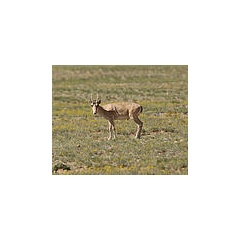A harsh winter condition is expected for the Mongolian saiga populations
WWF-Mongolia specialists, jointly with Saiga rangers, had a field trip within Mongolian saiga ranges in December 2018 for investigating overall conditions. Given that dry summer with late rainfall in most of the Saiga ranges was observed, a same harsh winter as of 2002 could be expected this year according to the saiga researchers and conservationists.
WWF-Mongolia specialists, jointly with Saiga rangers, had a field trip within Mongolian saiga ranges in December 2018 for investigating overall conditions. Given that dry summer with late rainfall in most of the Saiga ranges was observed, a same harsh winter as of 2002 could be expected this year according to the saiga researchers and conservationists. The rangeland conditions were found totally degraded and inadequate in the core habitat of the saiga such as Shargiin Gobi, Khuisiin Gobi and distributions of the Mongolian saiga were rather sparse. Previously, those areas used to be occupied by relatively large numbers of saiga with at least 200-300 individuals all year around. This time, only 10 individuals of single herd were seen. This fact depicts dramatic decrease of the population according to the field trip participants.
B. Batsaikhan, the team leader of Saiga ranger team, said “last summer was very dry and arid. So pastureland is in a very bad condition and there is no grass to be eaten by livestock and wild animals resulting local herders moving on otor (going to remote areas where better condition for livestock). Currently, remaining few saiga individuals have become too scattered due to lack of forage as pastureland
is severely overgrazed. Upcoming winter would definitely put the remaining individuals` survival at great risk”.
Some biotechnical and experimental measures such as putting hays and building shelters have been undertaken by the WWF-Mongolia for the saiga conservation over two decades. However, no specific progress has been seen to overcome and remedy the constraints faced to the saiga population since the Mongolian saiga is proven to be very sensitive wild species for such treatments.
Therefore, the most optimal options to reduce expected drought and dzud consequences include firstly, to make migration routes of the species free of human and livestock occupancies; secondly, to establish breeding center in Mongolia in order to restore saiga in historical range and thirdly, to free the reserve pastureland from livestock that would only be dedicated to saiga; and finally, to preserve hays and natural plants within saiga habitats to the possible extent for supplementary use when necessary. In this line, all the relevant parties should give a priority to releasing or making the saiga’s migration routes free of human and livestock inhabitance. As of April 2018, only 3000 mongolian saiga left, WWF survey shows.
( Press Release Image: https://photos.webwire.com/prmedia/6/233698/233698-1.jpg )
WebWireID233698
This news content was configured by WebWire editorial staff. Linking is permitted.
News Release Distribution and Press Release Distribution Services Provided by WebWire.
